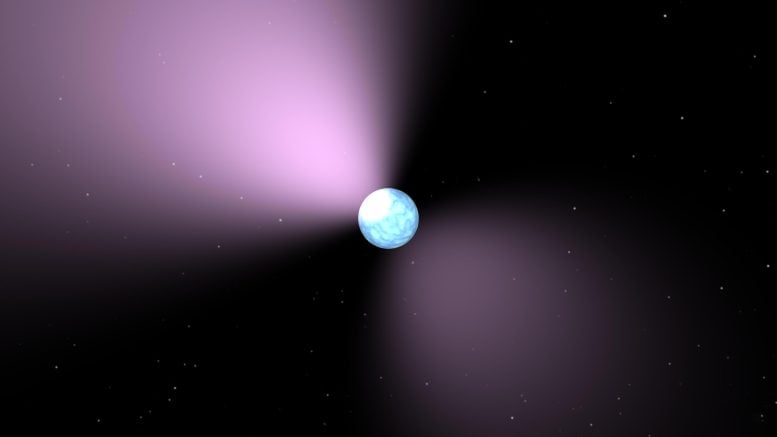
This artist’s concept shows a pulsar, which is like a lighthouse, as its light appears in regular pulses as it rotates. Pulsars are dense remnants of exploded stars, and are part of a class of objects called neutron stars. Credit: NASA/JPL-Caltech
Evidence for potential dark matter objects has been detected using pulsars, which are neutron stars emitting regular beams of radio waves.
These beams were analyzed by Professor John LoSecco, revealing variations and delays that indicate the presence of unseen mass, likely dark matter. LoSecco utilized data from the PPTA2 survey, involving precise measurements from several radio telescopes. The study found around a dozen instances where dark matter likely influenced pulsar signals. This research not only helps in understanding dark matter but also improves pulsar timing data for other astronomical studies.
Detecting Dark Matter With Pulsars
Tantalizing evidence of potential dark matter objects has been detected with the help of the Universe’s ‘timekeepers’.
These pulsars – neutron stars that rotate and emit lighthouse-like beams of radio waves that rapidly sweep through space – were used to identify mysterious hidden masses.
Pulsars earned their nickname because they send out electromagnetic radiation at very regular intervals, ranging from milliseconds to seconds, making them extremely accurate timekeepers.
“Science has developed very precise methods to measure time,” said the astronomer behind the research, Professor John LoSecco, of the University of Notre Dame, who recently presented his findings at the National Astronomy Meeting at the University of Hull.
“On Earth we have atomic clocks and in space we have pulsars.
“While gravitation has been known to slow down light for more than a century, there have been very few applications so far.”
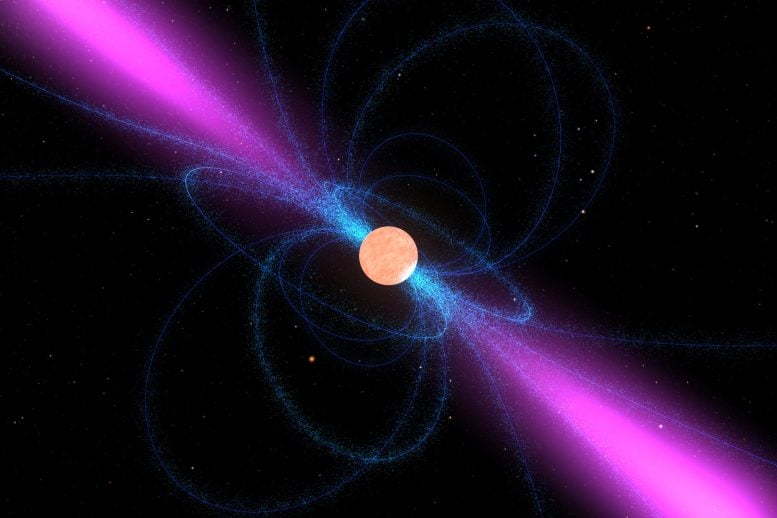
This image shows an artist’s impression of a neutron star, surrounded by its strong magnetic field (blue). It emits a narrow beam of radio waves (magenta) above its magnetic poles. When the star’s rotation sweeps these beams over the Earth, the neutron star can be detected as a radio pulsar. Credit: NASA Goddard/Walt Feimer
Observing Variations in Pulsar Timings
Professor LoSecco observed variations and delays in pulsar timings, indicating that the radio beams are traveling around an unseen concentration of mass somewhere between the pulsar and the telescope.
He believes these invisible masses are candidates for dark matter objects.
Professor LoSecco studied delays in the arrival times of radio pulses, which normally have nanosecond accuracy. He searched along the path of radio pulses within the PPTA2 survey data release from the Parkes Pulsar Timing Array.
This ongoing project produces precise measurements of pulse arrival times using data from seven different radio telescopes: Effelsberg, Nançay, Westerbork, Green Bank, Arecibo, Parkes, and Lovell, the latter in Cheshire.
The pulses have a cadence of approximately three weeks in three observing bands.
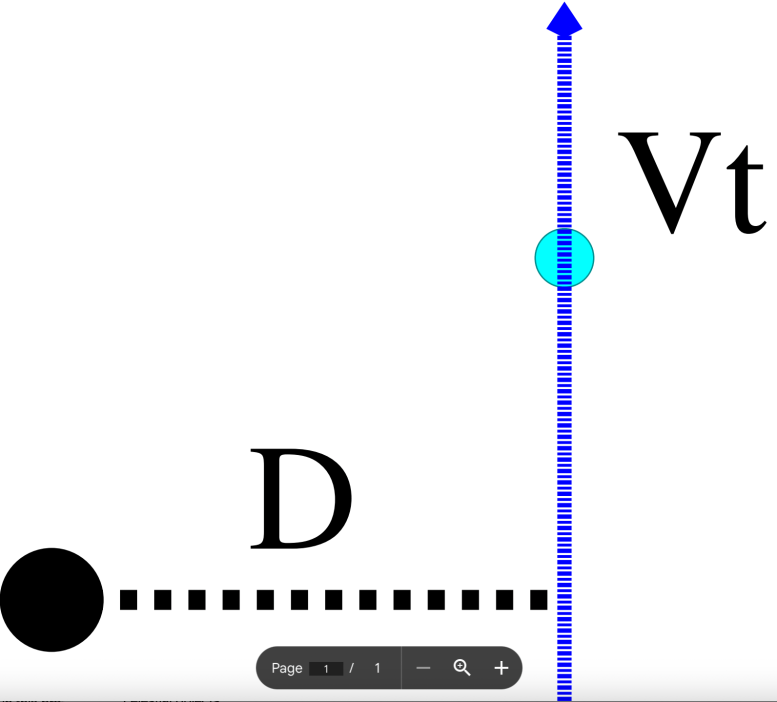
Graph showing the time-dependent geometry of a pulsar. Dark matter cosine as viewed by the observer. The Z axis goes from the observer to the pulsar (dot on the left). The point of closest approach is a distance D along the X axis. The Y coordinate is upward along the projected speed of the mass concentration. The displacement along Y is taken as V t. The mass concentration is in the plane at (D,Vt). Credit: John LoSecco
Deviations in Arrival Times Due to Dark Matter
Deviations in the arrival times due to dark matter have a well-defined shape and a size proportional to its mass.
Light passing near regions of dark matter will be slowed by its presence. A search of the precision data from 65 ‘millisecond pulsars’ has revealed around a dozen incidents that appear to be interactions with dark matter.
Professor LoSecco said: “We take advantage of the fact that the Earth is moving, the Sun is moving, the pulsar is moving, and even the dark matter is moving.
“We observe the deviations in the arrival time caused by the change in distance between the mass we are observing and the line of sight to our ‘clock’ pulsar.”
A mass the size of the Sun can produce a delay of about 10 microseconds. The observations Professor LoSecco made have resolutions of the order of nanoseconds, 10,000 times smaller.
“One of the findings suggests a distortion of about 20 percent of the mass of the Sun,” Professor LoSecco said. “This object could be a candidate for dark matter.”
Improving Pulsar Timing Data Sample
He also confirmed that a side effect of this research is that it improves the pulsar timing data sample. This precision sample has been collected to look for evidence of low-frequency gravitational radiation.
Dark matter objects add ‘noise’ to that data, so identifying and removing them will clean the samples of some variability, eliminating such noise during other searches for gravitational radiation.
Shedding Light on Dark Matter
“The true nature of dark matter is a mystery,” said Professor LoSecco. “This research sheds new light on the nature of dark matter and its distribution in the Milky Way and may also improve the accuracy of the precision pulsar data.”

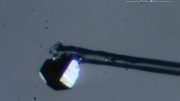
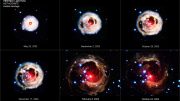




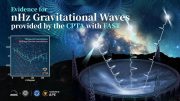

Be the first to comment on "Astronomers Detect Potential Dark Matter Objects in Space Using Pulsars"